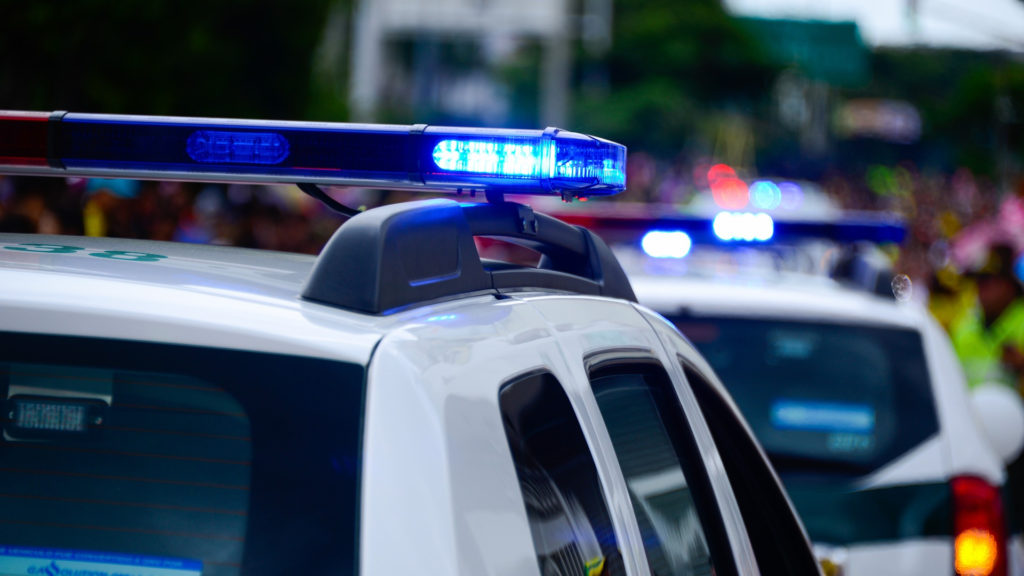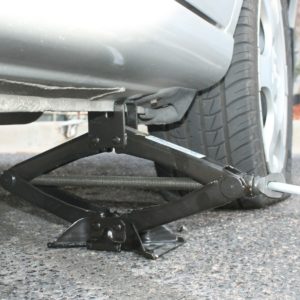Why Do Cops Tap Your Car’s Tail Light When They Pull You Over?
Have you ever wondered why do cops tap the tail light of your car as they approach you? Is this meant to intimidate you in any way? To exert dominance, perhaps? Or is it just something instinctual that you’d do too if you were a cop for a day – a mindless action that our subconscious makes us do with little to no logical reasoning behind it?
Well, there’s actually an entirely separate reason for this gesture and it’s both surprisingly logical and insightful, as well as very cool in an old-school kind of way.
Why do police officers touch your tail light when they pull you over?
So, what is the history behind the gesture and what was the original reason for it? As we know, accidents between police officers and people pulled off by them are not unusual. And considering that, according to the Bureau of Justice Statistics (BJS), the most common reason for a contact with a police officer in the first place is when you’re a driver and you’re being pulled over, such incidents are quite noteworthy.
So, in the past – before the invention of traffic cams and body cams – most such interactions between police officers and drivers remained unrecorded outside of what’s recorded in the police officer’s notebook. If an accident was to happen during the interaction – say, the driver hurts or incapacitates the police officer or simply chooses to drive away – there weren’t too many easy ways for the police officer to prove that the interaction even happened.
That is unless there was a fingerprint on the vehicle as evidence that the police officer did indeed pull it off.
Yes, the reason why cops tap your car’s tail light when they pull you over is so that they leave some evidence in case you decide to drive away or try (and potentially succeed) to hurt them. Ingenious, right? In fact, this practice isn’t just some “common sense thing” older cops taught the youngsters to do – for decades it was taught as a technique in police academies and it was done by all police officers. The reason why it was always done on the tail light of the car was so that if it did come down to an investigation, the investigators knew exactly where to look – a fingerprint anywhere else was likely to remain unnoticed as sweeping an entire vehicle for fingerprints is a tough task (this isn’t Hollywood).
So, as you can see, the practice of tapping your car’s tail lights is not some sort of superstition, empty tradition, or a subconscious hand movement – it’s actually a very strategic and taught behavior that’s done for the officer’s protection. Although, now that we are in the 21st century and we live in the era of traffic cams and body cams, the question of whether that tapping is necessary anymore becomes relevant.
Is there a reason for police officers to tap your taillight today and why are some younger officers not doing it anymore?
If body cams and traffic cams are used all throughout the U.S. these days, why do some police officers continue tapping our cars’ tail lights? Even if this action used to have meaning, isn’t it just superstition and tradition from today’s point of view?
To an extent, sure. In 99.9% of the situations a police officer can find himself/herself in, the fingerprint on a car’s tail lights will be unnecessary. However, you don’t need to be superstitious or “traditional” to know that technology isn’t flawless. There are cases in which your body cam can malfunction at the wrong time. There are cases in which traffic cam footage can be hard to read, or bugged, or even tampered with.
In other words – the extra surveillance we have today is a great asset for the police but it’s still not a guarantee. And police officers know – probably better than anyone else – how frustrating it is when a perpetrator gets away on a technicality or due to a lack of evidence. So if a simple tap on a car’s tail light can produce an additional bit of evidence even just in 0.1% of cases, and if it takes little to no energy to do, why not do it? Better safe than sorry, right?
Well, there are more and more young officers that have stopped doing this tapping in recent years. The main reason for that is that they rely on body cams and traffic cams to replace the need for fingerprint evidence most of the time, which they do.
Besides, there are additional factors to this practice. On the one hand, according to The Law Dictionary, the practice of tapping cars’ tail lights has the additional benefit of startling the driver while they are trying to hide illegal substances or prohibited items. However, at the same time, tapping the tail light, especially if it’s done noisily, also serves to accidentally give off the officer’s position which can be a very bad thing if they are to be attached.
So, with pros and cons to the practice, and with its main pro – leaving a fingerprint – becoming more and more unnecessary, younger officers are abandoning the practice.
Does this gesture matter from the driver’s point of view?
If you haven’t done anything wrong – or, at least, anything too wrong aside from speeding, for example – this shouldn’t mean much to you. After all, if you don’t intend to assault the officer or drive away, the fingerprint left on your tail light will be unnecessary.
One thing to consider is that washing your tail light after an officer’s tapping can be a good idea. That’s because some officers can get agitated when they see another officer’s fingerprints on your tail light as it means that you’ve been pulled off again recently, which means that you tend to break the law frequently.
- Floor Jack Storage Ideas and Tips - November 19, 2019
- Tips for Using a Car Jack - November 12, 2019
- How Often Should You Wash Your Car in the Winter? - November 5, 2019




Leave a Reply